Transcription:
Leigh-Anne Moore:
Hello, everyone. Welcome back. Let’s get started with our first session of the afternoon, AML Transaction Monitoring: Creating a Strong Governance Framework. This is going to be hosted by myself and I’m delighted to introduce my panelists, Marcos Tinedo and Dr. Mayya Konovalova.
Marcos Tinedo:
Hello.
Leigh-Anne Moore:
Hello, and welcome.
Marcos Tinedo:
Thank you.
Leigh-Anne Moore:
Let’s do a couple of introductions. Marcos, over to you. Let’s go first.
Marcos Tinedo:
Yeah. Thank you. I am now Head of Compliance assurance here in Mexico in a company, a payment segregator called Billpocket. My experience more than 22 years in financial services system. First in Citibank, then HSBC. I’m Venezuelan, living in Mexico from five years ago. We have a regulatory experience in the financial risk management framework. My experience has been there mainly, and also in compliance over regulatory matters.
Leigh-Anne Moore:
That’s great. Thank you very much. Dr. Mayya.
Mayya Konovalova:
Hi everyone. My name is Mayya, currently work with the University of Birmingham, where I lecture and research in the areas of taxation and anti-money laundering. Previously to my academic career, I used to work in the industry, so I’m not completely detached from the industry as a typical academic. Hopefully I can bring some of the insights because academic world gives you an opportunity to think and reflect on the practices that you used to do and practices that are happening now. Thank you very much for inviting me to the session.
Leigh-Anne Moore:
Thank you. It’s such a exciting topic that we’re talking about this afternoon. For those listening, please feel free to raise any questions using the chat facility and we’ll try to answer as many of those as we can as we go through the session today.
Let’s start, Marcos, by giving a bit of background here. From a risk and control perspective, what is AML Transaction Reporting and how does it differ maybe from fraud or other types of reporting that firms might be doing?
Marcos Tinedo:
Yeah. Thanks for that. It’s very important to explain about the difference and about what is AML Transaction Monitoring. AML Transaction Monitoring is the AML pillar from a program where you have a detective control, before going to transaction monitoring.
Until this moment, you are first in the preventing side of the control, making KYC screening and all of that. And then it comes a detective part that is AML Transaction Monitoring. So it’s very important to put this very clear for no confusing in which part where we are.
AML Transaction Monitoring is the last opportunity for you to detect any suspicious transaction before it gets to the street or before you can be considered a facilitator or a person that are providing facilities to launder money within your structure. That’s very important to take in sight.
Also, it’s important to differentiate from fraud transaction monetary that is very common in the street that people confuse those ones. Although your transaction base is the same because there is one transaction for all, but the techniques for fraud or AML are very different. For fraud, you are more interested in how many times, for example, a transaction is occurring in a finite period of time.
For example, a person is trying to withdraw from a ATM 100 pounds in two minutes. That is very suspicious and it will raise the alarm for the fraud part. But from AML, we are more interested in seeing what is happening about when people declare on the moving or with historic movements. Perhaps there is a transaction that doesn’t match that history or that one that you declare.
For example, you go to the bank and say, “Okay, my account will be only for having my savings stored there,” and suddenly when you began operating, you see that these people is moving money around the world, is making withdrawals, is making entering and outgoing money and there is not a match between those things.
That is suspicious transactions and your system, if you are automated or if you are working on a manual base, you need to raise the alert to analyze and to have a dedicated team to analyze and to review what is happening here. Even that may include contacting the client, or if you confirm that it is a suspicious transaction that may involve raising a SAR to a regulator, a suspicious report to the regulator.
Leigh-Anne Moore:
That’s great. Thank you so much for clarifying the differences there. If we think about the AML Transaction Monitoring, there’s quite a lot going on within that space. What are some of the common problems or pain points that firms have?
Marcos Tinedo:
Well, a lot of them in my past experience as auditor reviewer [inaudible 00:06:27] regulator, are many core pain points because in some jurisdictions the AML Transaction Monitoring is regulated from a minimum standard perspective. So people tend to think that just implementing all the regulatories requiring you, your system is going to be effective and function.
Perhaps it will function, but not necessarily will be effective and you need to create there are some additional measures or to implement some additional recent control measures to have an effective system. For example, we can think about a very basic one, having your policies and procedure documented.
That’s very important because I have found in my history, many people that don’t have this documented and it’s very difficult. For example, you have a half of people making disposition of others. To them, they have the know-how and have the awareness or have to do the correct thing. That’s a very important point.
Also, capacity planning is very important. If you don’t have an adequate capacity planning and you have a product, for example, for the consumer side that have seasonal peaks, for example, December gift or vacations or summer vacations, something like that and you do not take that inconsideration in advance with a capacity planning, you can have many backlogs when suddenly you receive the transaction log and you receive tons of transactions that you need to dispose in a predetermined time and you don’t have enough people or the system in place or the outsourcing in place to do that timely.
That backlogs are very bad for you because they criticizes from a regulatory perspective when the jurisdiction, these have been regulated, or even you’re going to have a problem because if there is any people there making some bad movements for launder money, you’re not going to detect it on time.
So when you detect it, perhaps next month, or next two or three months, that’s going to be very late and you can be accused of facilitating money laundering within your instructor. That’s some of the pain points. There are many other ones, but, you want to let Mayya share-
Leigh-Anne Moore:
Yes.
Marcos Tinedo:
… her thoughts about this, please.
Leigh-Anne Moore:
Maya, from your experience in industry, what are some of the pain points that you’ve seen for some of the firms that you’ve worked with?
Mayya Konovalova:
I think what Marcos has covered is very important. Thank you so much for those insights, Marcos. It’s important to understand what the regulations are aiming to look at, that’s why we need to know exactly what we are doing, whether it’s AML or fraud that we are trying to identify.
But I would like to talk about something that tends to be lost in those conversations. That is a human factor, really. The company’s culture, because all those tools, automatic systems, they’re only as good as they’re being used, how humans operate in them. I think, well back to the money laundering. The objective of money laundering is for criminals to try and enjoy the fruits of their crime.
Yes, whatever crime proceeds they received, they want to use them. And therefore we have financial firms who need to be the gatekeepers to deprive them of using those funds. Now, the FATF puts it as that is the aim of the anti-money laundering regulations. And essentially it appeals to our feel good about ourselves. We don’t want crimes to happen. This is like an ethical aspect to it.
But in reality, there’s no carrot. Yeah. There’s only a proverbial stick here, so if you get it wrong, then there might be a big fine, there will be a reputational damage. That’s why this message of feeling good about yourself by preventing money laundering, it becomes lost and besides the financial firms, they’re in the business of making money. They’re not in the business of policing.
Yeah. That’s not what they study. That’s not what they do. This is not what is in the company itself. This is not what is being rewarded. Yeah. The reward is linked to the performance. I’ve never heard of any bonus schemes based on how many money laundering cases you identified.
And I think it’s very important for the board for whoever is on top of the firm to realize those factors and try to make the conversation, try to send the message to everyone, to create that company culture where it is discussed and actually people are motivated to identify money laundering. Yes. Like I said, systems are really good, there are good tools, but people have to have a motivation to actually identify those things. That’s what I wanted to mention.
→SEE ALSO: FinCrime World Forum
Part of the Digital Trust Europe Series - will take place through May, June & July 2022, visiting five major cities;
Brussels | Stockholm | London | Dublin | Amsterdam
Get to the edge of the financial crime debate at FinCrime World Forum.
Leigh-Anne Moore:
That’s a really good point. We’re starting to get a few questions coming in. I want to make sure that we address all of them and it seems a good time to look at some of those now. One of the questions that’s come in, are there any ISO standards for implementing the governance framework?
Marcos Tinedo:
Yes. Well, there is the ISO 37000. We put it in the chat. That is for generic governance framework, like having a governance oversight in any company. Perhaps you can have the ISO 38500, that is specific for IT Governance framework. You can have many of them. It depends on what you want to do. You can have an ISO dedicated for that purpose.
Leigh-Anne Moore:
Okay. That was great. Thank you for sharing those. The second question we’ve got, which I think is a really key one. Do you have any thoughts with respect to data, so volumes, quality, siloed data and the degree to which it might be a hindrance in monitoring?
Marcos Tinedo:
Yeah, sure. Because it’s important to have a data quality management in all of this process. Perhaps it is important to have a calibrated scenarios that you’re monitoring scenarios very well calibrated and up-to-date just to be sure. And also that you’re not going to be having very noise or a lot of inproductive alerts.
We talk about inproductive alerts when you get a lot of false positives that raise alerts and then go to the hub that you’re using and that give you a sense that you are very busy in making and reviewing alerts, but are not being productive. So perhaps you can have there a calibration problem in your model.
Also, it’s important to adjust the thresholds on your scenarios, because for example, now that we are in a global inflationary environment in more than one country than another, it’s important to update these threshold because for example, if your threshold is 1,000 and you are perhaps operating 19, and then the price of something rise to 100, but you’re going to have a massive alert escalation, but it is not caused by suspicious transaction monitoring.
It’s just by the inflationary matter. So I have saw that in two places where we have a very heavy inflationary scenarios in the past and we need to adjust the threshold for that reason. Also, very important to have in place an issue management and resolution for that quality, because sometimes you can have data trash from system errors or from systems inaccuracies or even when you have misspelt names or data or dates or amounts. It’s very important to have this in place and you have to develop a complete governance framework to be able to catch this in advance.
Leigh-Anne Moore:
Yeah, I completely agree. When we talk about having a complete framework, obviously there are challenges working globally. One of the questions that’s come in is around, are there any regulatory standards that are global without cross border frictions?
Marcos Tinedo:
Well, I don’t know that. I have not have to see that until now. I don’t know if Mayya have identified something regarding this?
Mayya Konovalova:
The way international recommendations or standards work normally, essentially they are in a sense voluntary for each country to adopt. Yeah. There’s no one global regulating [inaudible 00:15:55] who would say-
Marcos Tinedo:
Yes.
Mayya Konovalova:
… “Everyone has to do this.” So there’s a set of standards that other countries are invited or maybe coerced into adopting and then it’s up to them how they interpret it, how they put it, which legislation they put it into and [inaudible 00:16:12]. So there are… They’re call soft regulations because they’re not… You cannot push a country because of the sovereign… Each country has sovereignty. They need to be able to decide what to do, but they… There are ways for them to push them towards that decision, I would say.
Leigh-Anne Moore:
Yeah.
Marcos Tinedo:
Yeah. Perhaps here from a multinational perspective, you can work it inside your organization, having a global standards, having a global standards policies of AML Transaction Monitoring, and then in each country as Mayya said, everyone can tropicalize their jurisdiction and regulation just to put it on land about what is everyone requiring in a jurisdiction that may very differ very differently one for another.
Leigh-Anne Moore:
Yeah. Thank you for that. We’ve spoken about some of the challenges within this space. Are there some practical recommendations or examples that you can share in terms of what firms can be doing practically within this space?
Marcos Tinedo:
Yeah. And there, it’s very important to have dashboards in place to measure people and process quality. Their productivity is very important, because this is a very massive… Well, until now it’s very massive people-oriented activity, although there are new alternative about artificial intelligence, machine learning, all of that.
But the decision at the end is based on people, well, until now. Perhaps in the future, we can have a development of a robot that can think for you about taking a decision of reporting a software regulator or disposition alert. But I think that is not in the scope right now.
So there, it’s very important to have these dashboards or productivity to identify who are the leaders and who are the laggers, and also to identify training needs in the people, because all the people need to be very up-to-date about the procedure of this position, these alerts, because you have to take consideration that when the transaction is alert in some jurisdiction is able to be blocked.
So you have a client there waiting for the transaction to be settled. Until that, if your issues don’t have a very accurate, have making analysis, you’re going to have some complaints about client, about having unnecessary delays about their transaction to be disposed and then be settled in the financial system, for example. That’s very important.
Also, you need to define your level of disposition. You have two models, level one, level two, and level three. That is when you get an alert it goes to analyst. That is very basic one, so the maker and is going to make a very basic analysis and then if there is no decision about it’s false or it’s a positive one, it goes to a level two, where there is a more senior people that is going to make a more thorough investigation about what is happening that are called the checkers.
And then if you don’t have a decision there, you need to go to compliance, to AML compliance, to have a final decision of that. That is very often used in very large organizations. I have seen small and medium ones like FinTechs and [inaudible 00:19:46] that is a level two, where the same people that in level one are very senior people and he’s been able to make level one.
And then if there is no decision, goes to a level two, work with other people, other person similar to within his team that have the experience to do that. And if he don’t have any decision yet, he goes directly to compliance. So it’s more dynamic, but it’s more seen in more smaller companies. So it’s very important to define also.
Leigh-Anne Moore:
Well that was great. Mayya, any other practical examples that you’ve seen?
Mayya Konovalova:
Like I said, because I do not work in the industry directly now, I might not be the best person into the up-to-date current, how the systems work and technical details, but I could have a more general perspective of that.
Of course the system, automated system, like I said, the human factor is quite important, so you need to check the output of the system quite often. All those frameworks in place, they need to be actively managed. Yeah. You just need to check, “Okay, what is it? How does the system… Does it identify this? Or does it identify that? So active human engagement I think is important.
Leigh-Anne Moore:
Definitely. We’ve had a few comments made around the system side, the automation side. One of the questions that’s come in is would you address false positives which tend to be high? Does data suggest that such is decreasing as a result of improved protocols or practices? This question is around false positives.
Marcos Tinedo:
Yes.
Leigh-Anne Moore:
What do you think?
Marcos Tinedo:
Well, false positive, you need to be very careful because by their name they need to be dispositioned because you don’t have all the things on hand to raise an alert or to confirm a positive SAR and raise a SAR to a regulator. But you need to take this in a lock because these people can come again and make another operation where you can say, “Okay, this false positive at once now is a positive confirmation of other suspicious transactions.”
But it’s very important to have that in mind, because sometimes people tend to think that a false positive is disposition and that’s all, there is no problem. And perhaps the repetition of the false positive can lead you to a positive match in the future.
Leigh-Anne Moore:
Another related question to that is around the cheat system thresholds. Do you have any thoughts on that? In your opinion, what protocol should organizations consider to ensure the effectiveness of these cheat system thresholds?
Marcos Tinedo:
Yeah. It’s very important, as I mentioned, to have this in place to monitor economy and to know well your product, your people, your clients, and your geography, because you need to be monitoring this and try to update it in a very frequent way, if for example, you have inflationary matter or perhaps there is a specific movement in your product or the people targeting or buying some consumer product, they’re having a movement. So it’s very important to have these threshold updated and including your scenario, just to be sure that they are not making or generating artificial alerts or inproductive alerts.
Leigh-Anne Moore:
It’s a challenging area, isn’t it?
Marcos Tinedo:
Yeah. Very challenging.
Leigh-Anne Moore:
Absolutely.
Marcos Tinedo:
Because you need to be very comprehensive or have a multidisciplinary team, not just people, for example, from the operational side, but also to have people from risk is very important and making that monitoring and also talk to all organizations and even stakeholders, because you can lose or not taking side something very important within your scenario, that is not going to be captured or monitored, or you’re going to cause a business problem if your scenario is raising a lot of alerts and they are not getting you to any place.
Leigh-Anne Moore:
Thank you. Another question that’s just come in actually is around this creating a strong governance framework. And what are your thoughts on the personnel makeup and perhaps enterprise buy-in regarding engagement?
Marcos Tinedo:
Well, it’s very-
Leigh-Anne Moore:
Mayya.
Marcos Tinedo:
Sorry. Sorry. Please go ahead.
Leigh-Anne Moore:
No, sorry. No, go ahead. Go ahead, Marcos.
Marcos Tinedo:
Yeah. Sorry. I think it’s very important to have governance forums about this and also have, from the board of directors, the engagement at the top and then goes down and have the bottom up and the middle management also be aware of this. Have this culture embedded in the organization, but this is the same for the other AML product pillar. So I think this is has to be within your AML pillars from the communication side and also training and also awareness of the organization about this matter.
Leigh-Anne Moore:
So follows the same principles really.
Marcos Tinedo:
Yes.
Leigh-Anne Moore:
Mayya, this really falls into your court and what you were saying earlier around having the right culture.
Mayya Konovalova:
Yeah. I think Marcos put it really nicely. It is about the company culture, because perhaps it’s a bit of a cliché. But people who are below the board of directors, they need to understand why they’re doing all that. Yeah. Because it is quite an elaborate process, looking after all those systems, keeping up to date to different scenarios. They need to know, well, why are we actually doing it?
The reality is that in many companies anti-money laundering is still associated with some kind of a business prevention function. Yeah. So it goes against what the company’s aim is and therefore, I think the top management, they should really set the tone that they said, “Well, actually it’s not the business prevention, but it is quite important why we are doing it.
Yeah. We don’t want to get fines. We don’t want to lose our reputation. We don’t want the crimes to happen. We don’t want to be enablers of the crimes.” So it should be a team effort rather than people who are responsible for those monitoring transactions doing that without necessarily knowing why they’re doing it.
Leigh-Anne Moore:
And when we were talking about culture and motivation and incentives, one of the questions that was raised at the time is, do we think that’s the right way forward? Do we think there should be incentives for people to do the right thing?
Marcos Tinedo:
Yes. I think it’s very important to get your people trained. I think it has to be part of the culture within the organization to raise the hand and to have alerts and also have a disciplinary well-established action is one of perhaps high an alert on [inaudible 00:27:40], because it can be from perhaps a personal intention here, or even you have been contacted by someone who is making some fraud intent. So I think it’s very important to have this in place and have to be within the culture of the company.
Leigh-Anne Moore:
Mayya, do you agree with that?
Mayya Konovalova:
Yeah. Yeah. I mean, like I said, motivation is an important thing, but we need to be careful with how we incentivize people to do certain things, because let’s say, we say, “Okay, there’s an incentive for you. The more money laundering cases you discover, the more, for example, you get the payments,” or whatever.
And then people will switch to that motivation. They will look at transactions which are not necessarily a link to money laundering, but it’s just the quantity. They will try to hit the quantity rather than quality. So there’s just basic human nature. We do more of something which is being rewarded.
I wouldn’t suppose you have upon a system or something for discovering those things, but definitely an open conversation. And there should be like a mission, not the main mission of the company, but something that is implicit in the company’s goals.
Companies nowadays do CSR reports for society, but something like that maybe should be communicated for staff as well. So what is the mission? What is one of our objectives and that should be in there, I think, just so that people are clear about what they’re doing, what the company’s mission is and yeah. So that becomes part of what they do rather than a burden that needs to be followed for some reason.
Leigh-Anne Moore:
Yeah. No, no, I understand. And Mayya, this is a question for you that’s coming, given your private sector experience and academia. What do you consider as the disconnect with respect to preparing students for the industry? What are your thoughts on what endeavors should be undertaken?
Mayya Konovalova:
Yeah. That’s a very [inaudible 00:29:52].
Leigh-Anne Moore:
An interesting question.
Marcos Tinedo:
[inaudible 00:29:54].
Mayya Konovalova:
It is actually. I don’t have a direct answer because that’s a continuous debatable thing. I think we need to be clear about the role of universities and the role of professional bodies. Yeah. Professional bodies, they prepare people for the industry. Yeah. We have professional bodies, we have ICA, for example, they provide quite a lot of material for practitioners to be able to identify money laundering, for example.
University’s role is somewhat different. We try to prepare students to be educated citizens, first of all, question things. Even though our module is accounting and finance, it doesn’t mean that student who finished it as a qualified accountant, they would still need to do, they have professional exams? ACCA for example, yeah?
Marcos Tinedo:
Mm-hmm.
Mayya Konovalova:
Of course from anti-money laundering perspective, I teach a lecture for master students, but that is not part of our BSC program undergrad.
Leigh-Anne Moore:
Sure, sure.
Mayya Konovalova:
[inaudible 00:31:07].
Leigh-Anne Moore:
I think we might be going slightly off topic here and I know this is a topic we could talk about for a long length of time. I myself work with a lot of graduates, so I get what you’re saying. But let’s go back to the AML and the governance frameworks in particular. In some of the other questions that have come in here is, what is the role, from a technology perspective, that development ops, for example plays, how should they be included in the development of such frameworks? And I think that’s a really interesting question.
Marcos Tinedo:
Yes, because this is a very technological-oriented function if you are automated, of course. In large companies and large financial system, you need to have embedded specific dev-ops department within the AML unit, because there are a lot of demand things about enhancements, about this issue management resolution.
There is a lot of data quality and you need to have the people in place also to be able to update the threshold on time and to perform the calibration of the monitoring scenarios that have to be performed from a technology perspective and of course then from the AML perspective, and there you have to have a conjunction there within the two teams for this to be effective.
In small, smaller companies, if perhaps the IT department have some people dedicated to this, but it’s more from a collaboration and also to have the awareness for the chief technology officer, for example, to be on the top of this, and also have resources available to work on this and not to be included, like all the people in the technology development side, because when there is any urgency in the AML Transaction Monitor that we need to calibrate or to review something, and there is no people available, that’s going to be a problem.
Leigh-Anne Moore:
Definitely. Definitely. And as the governance frameworks are further developed, another concern is around unconscious bias. Is that something that you’ve seen? I guess, what are the challenges around there and what should firms be doing?
Marcos Tinedo:
Yes. And especially, I ask that in some analysts and people when reviewing their alerts and something like that. Is there any famous name there or any famous company that are in the news, for example, or a person that have some negative adverse media. Just try to have unconscious bias, but as I mentioned then, you need to do your analysis very objective.
If you have the things in place, you can raise alerts and you can confirm the positive match. If not, you have to fall positive. As I mentioned before, you need to have a look about this occurrence because these people can come again in the future and make some other operations that can give you a lead to have a positive match.
Yes. But to see a lot of that, there has to be included in the training initiative within the AML department to train the people to follow the procedure, also express their concerns. But this is the policy or if you are a detective, you don’t have all the things in place. You cannot raise a positive match because you’re going to be in trouble.
Leigh-Anne Moore:
Okay. Thank you very much. Just having a look, we’ve got about five minutes left. So I just want to see if we’ve answered all of the questions that have been raised. We’ve had quite a few questions raised, which is great. Clearly an engaging topic for everyone. One of the questions that we’ve just skipped over there is, once the AML transaction has been confirmed, how soon should the regulatory body publish the information for public openly? Is there a time limit there?
Marcos Tinedo:
Well, the function or the obligation of the company, where you’re working for is to report SAR or the Suspicious Activity Report to a regulator. Then from the regulatory side, there is a specific time because this is very delicate and it will depend of the legal framework of each country.
Some of the criticism of the FATF, for example, is that in many countries, the prosecutor and the legal system is not effective. So perhaps the regulatory body have a lot of alerts of SARs or reports, but when they go to the judicial system, there is no effective, or there’s no cause to a prosecution, for example.
I think there is no established time, but in the… There has to be, in the ideal world, very soon, they have to prosecute a person to go to judicial system and then when the people is prosecuted, it can go public because you cannot go public before you can be breaching some of the rights of the people in the due process, all of that.
Leigh-Anne Moore:
It’s a lengthy process, isn’t it?
Marcos Tinedo:
Yes.
Leigh-Anne Moore:
That they have to go through.
Marcos Tinedo:
Yeah.
Leigh-Anne Moore:
Okay. We’ve got a couple of minutes left, so I just want to quickly come back to you. Now, we’re coming to the end of this session. And just maybe, what are your key takeaways in this space? We’ve been talking about what it is and what some of the common problems are, what some of the practical application best practice. What are your key takeaways, Marcos? What should firms bear in mind?
Marcos Tinedo:
Yeah. Well, bear in mind that this is a very complex and complicated function, it is very often the pain point of the AML pillar. And it’s very important that you have all these recommendation plans for your governance framework being effective, not…
And give also importance, not to the system itself, but the framework you’re using, because you can be operating in a manual mode, but you have this framework very, very well established and all the people in [inaudible 00:38:07] the hubs very well, like at the top and your scenario is calibrated, you’re going to be effective.
This is the objective of this AML program in general, to be effective, not to have a lot of system artificial intelligence, machine learning. I think that’s going to help you, definitely, but you need to know how to use that and how to direct that and not to lose sight of the perspective that the human side or the human thinking is. The one that is still now is going to do the right job and right decision of escalating software or not.
Leigh-Anne Moore:
Thank you very much. That’s great advice. Mayya, over to you, any key takeaways for our audience today?
Mayya Konovalova:
Yeah. I think Marcos has summed it up really nicely, whereby he integrated both of our main points. I realized we’re short in time as well. I suppose. Yeah, like with any other regulations we have criminals who are always ahead of the regulations, as well as playing catch up and crimes committed today, money laundering crimes, they will be addressed in a several years time maybe. And that’s why just to point out that the human element, the human factor is really important, because systems might be outdated, but it is the human who can actually identify some of the red flags.
Leigh-Anne Moore:
That’s great. Well, Marcos and Mayya, thank you so much for sharing your insights with us today. It’s been a really interesting session. Thank you both so much. And thank you for all the great questions that we’ve had come in today.
Great. Thank you everyone. We are going to a short break now and we will be back shortly for the next session, which is on the Key Elements of an Effective Global AML/KYC Compliance Program in 2022. So please grab another tea or coffee and join us in 10 minutes time for the next session. Thank you.
FinCrime World Forum
Part of the Digital Trust Europe Series - will take place through May, June & July 2022, visiting five major cities;
Brussels | Stockholm | London | Dublin | Amsterdam
Get to the edge of the financial crime debate at FinCrime World Forum.
FinCrime World Forum is a two-day in-person event taking place as part of the Digital Trust Europe series. The event will feature presentations and panels from thought-leaders and anti-financial crime professionals that are leading the way on how we can better, more efficiently and more effectively fight financial crime.
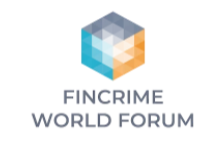
AML Transaction Monitoring: Creating a Strong Governance Framework
- 1
 Currently reading
Currently readingAML Transaction Monitoring: Creating a Strong Governance Framework
- 2
- 3






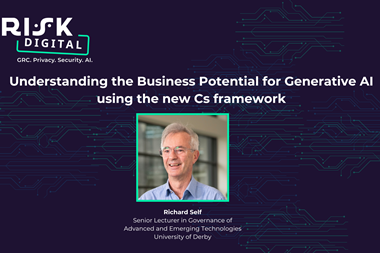

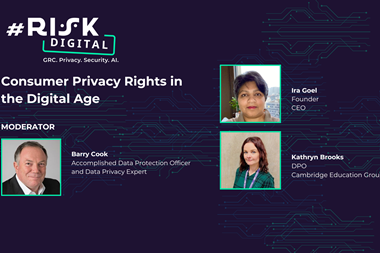


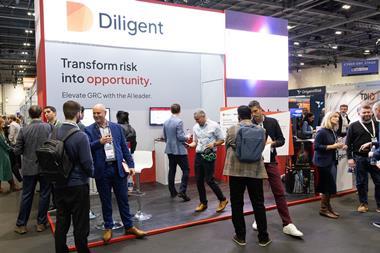

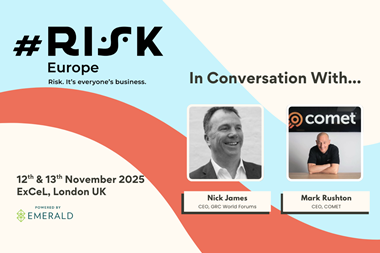

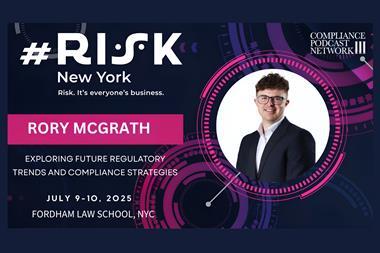



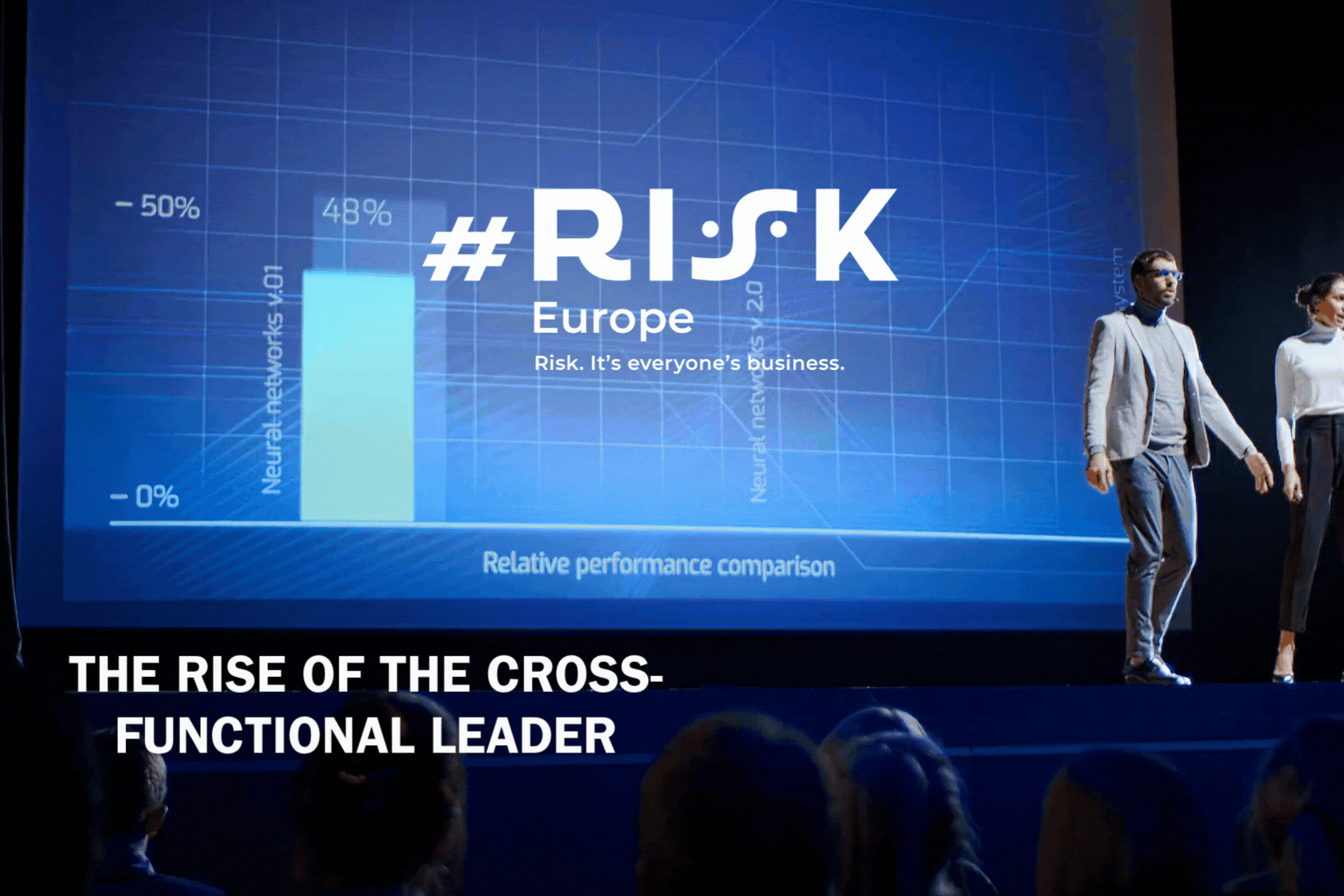



No comments yet